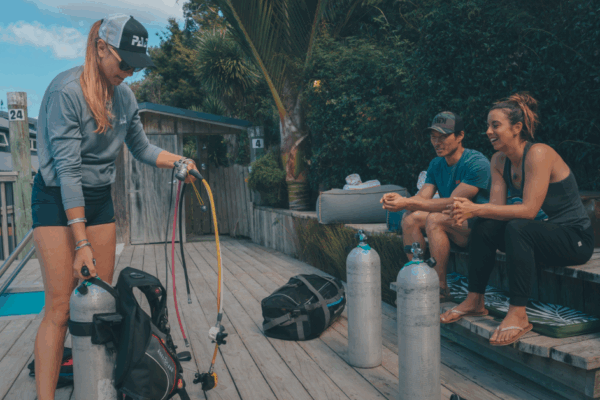As first responders and EFR® Instructors who teach CPR and first-aid courses, it’s becoming increasingly prudent to equip yourself with knowledge about suspected opioid overdoses and the potentially life-saving drug, Narcan. The opioid crisis has reached alarming levels globally, making it imperative to understand how to recognize and properly respond to opioid overdoses. What exactly is Narcan, how do you obtain it and how do you treat opioid overdoses?
What Is an Opioid Overdose?
Opioids are medications prescribed by a doctor to help relieve pain during recovery from an injury or in treatments for chronic illness. They are also commonly used during surgery when a person is under anesthesia. Opioids can be given safely, however there is an increase in the abuse of both prescription and non-prescription opioids in many communities.
An opioid overdose occurs when a person consumes excessive amounts of opioids, including prescription painkillers or illegal substances such as heroin or fentanyl. Opioids depress the central nervous system, leading to slowed or stopped breathing, loss of consciousness, and even death. This process is usually somewhat slow and can take a few minutes to a few hours. However, when people survive it’s usually because someone was there to respond.
First Aid for Suspected Opioid Overdose
If you suspect someone is experiencing an opioid overdose, it’s crucial to know how to respond quickly and effectively. This guide will walk you through the steps to provide first aid for a suspected opioid overdose, incorporating the use of Narcan (naloxone) and CPR.
These steps can be integrated into your EFR training as scenarios, or as part of EFR Primary and Secondary Care skills, like Scene and Patient Assessment and Integration into Illness and Injury Assessment. You may also consider running community workshops to teach first aid, CPR and AED use for suspected opioid overdose as a community service offering.
1. Assessing a Possible Opioid Overdose
If you are unsure if someone is overdosing, ask yourself these questions as you begin your assessment:
- Is the person breathing?
- Is the person responsive?
- Does the person answer when you firmly tap them and shout their name?
- Can the person speak?
- What color is their skin, particularly their lips and fingernail beds?
- Are there obvious clues, like needles or pill bottles around the person?
Signs of a Possible Opioid Overdose
- Slow or shallow breathing, or no breathing at all
- Pulse is slow, erratic, or not present.
- Unresponsiveness or inability to wake the person up
- Blue lips or fingernails
- Pinpoint pupils (extremely small) or difficulty focusing
- Pale or clammy skin
- Vomiting
- Body and muscles appear limp
- Gurgling, choking or snoring sounds
- Awake but unable to talk
2. Ensure Safety
Ensure the scene is safe and your safety first! Before approaching the person experiencing the overdose, assess your surroundings and look out for any potential hazards, such as needles or drug paraphernalia, or other dangers. Be sure to also put on protective barriers, like gloves and eye protection.
3. Call for Help
Dial emergency services immediately. Inform them of the situation and provide specific details, including the fact you consider this to be a suspected opioid overdose. Where practical, consider using terms like “opioid poisoning” instead of generic terms like overdose or drugs. It’s very important to focus on reporting that the person’s breathing has slowed or stopped, or that they are unresponsive more than the fact it is possibly caused by opiates.
4. Check for Breathing and Responsiveness
Tilt the person’s head back and lift the chin to open the airway. Look, listen and feel for breathing for no more than 10 seconds.
Unresponsiveness or inability to wake the person can be common – if they are breathing, try to physically and verbally stimulate the person to wake them up. Try to rub your knuckles into their sternum, collar bone or pinch the back of their arm. Speak loudly and clearly at the person to try and wake them up. If this causes the person to wake up, try and get them to focus and keep speaking to you. If they do not respond to stimulation and remain unconscious or appear to worsen, treat this as an emergency.
5. Administer Narcan (Naloxone)
Narcan is often available as a nasal spray or injectable. Follow the specific guidelines for the chosen form found on its package. In many countries, Narcan is available over the counter at pharmacies without a prescription, while in other locations, it may require a prescription or be restricted to specific healthcare professionals. Be familiar with your local laws and regulations regarding Narcan availability and access.
Prepare the Narcan: Follow the instructions provided with the Narcan kit. This may include removing the device from its packaging, attaching the nozzle or applicator, or assembling the nasal spray.
Before you administer the dose, follow these steps:
- Place the person on their back.
- Tilt their head back slightly.
- Insert the tip of the device into one nostril, ensuring a good seal.
- Press the plunger to release the dose. Administer the full dose indicated by the packaging instructions.
- Repeat the process in the second nostril if necessary.
Administer Narcan: If you have the nasal spray version, administer the Narcan by inserting the nozzle into one nostril and pressing down firmly to release the medication. If you have the intramuscular version, administer the Narcan by following the instructions provided with the kit. It is best to inject into a large muscle, such as those in the thighs, the buttocks, or shoulder.
It’s important to remember that naloxone only works if there are opioids involved. It cannot reverse an overdose of other drugs, like cocaine, speed, alcohol or other non-opioid dugs.
6. Perform CPR (if necessary)
If the person is unresponsive and not breathing, start CPR. Begin with chest compressions at a rate of 100-120 compressions per minute. If there is no change in the patient after three to five minutes, administer another dose of naloxone, if available, and continue CPR.
7. Continue Support Until Help Arrives
Once Narcan has been administered, continue to monitor the person’s breathing and responsiveness. If they begin to breathe and regain consciousness, place them in the recovery position to prevent choking and stay with them until emergency medical services arrive.
Repeat cycles of CPR and administer additional doses of Narcan, if needed (wait three to five minutes between doses). More naloxone may be needed. You will not cause further harm to the person by giving them naloxone, even if they are not actually suffering from opioid poisoning. You can give it to any person who might need it, even if they are not able to ask for your help. Continue care until the person starts breathing on their own or emergency responders take over. If the person is stable and breathing, put them into the recovery position.
8. Provide Information to Emergency Responders
When emergency responders arrive, provide them with a detailed account of what happened, including the substance suspected to have caused the overdose (if known), and any actions taken, such as the administration of Narcan including the quantity and time of administration. State only the facts, do not speculate.
9. Stay with the Person
Continue to monitor and support the person even after administering Narcan – it’s essential to closely monitor the individual until medical professionals arrive. Check their breathing and heart rate regularly and be prepared to perform CPR if necessary. Keep the person calm and reassure them that help is on the way.
Naloxone normally takes effect immediately and usually lasts between 30 to 90 minutes. However, the effects of the opioids may last much longer, and it’s possible that after naloxone wears off the overdose may reoccur. It’s very important that someone stay with the person until help arrives and to discourage any further use of illicit substances.
10. Encourage Professional Help for Follow-Up
Even if the person seems to recover, urge them to seek medical attention for a comprehensive evaluation. There may be other serious conditions caused by incident that require immediate attention.
Remember, timely action can make a significant difference in the outcome of an opioid overdose. Being prepared to recognize the signs and administer Narcan and CPR can save lives. Naloxone kits are easy to use and, in general, easy to obtain. It’s a good idea to check with your local community for availability of Naloxone kits – start with your local social services and public-health units to see where they are available. Places like local clinics and the pharmacy may also offer them free, over the counter.
Narcan (naloxone) plays a vital role in reversing the effects of opioid overdoses, but it’s crucial to act quickly and follow proper administration techniques. By staying informed, taking proactive steps to obtain Narcan, and being prepared to respond to opioid overdoses, we can make a significant impact in combatting the opioid crisis and saving lives in our communities.



